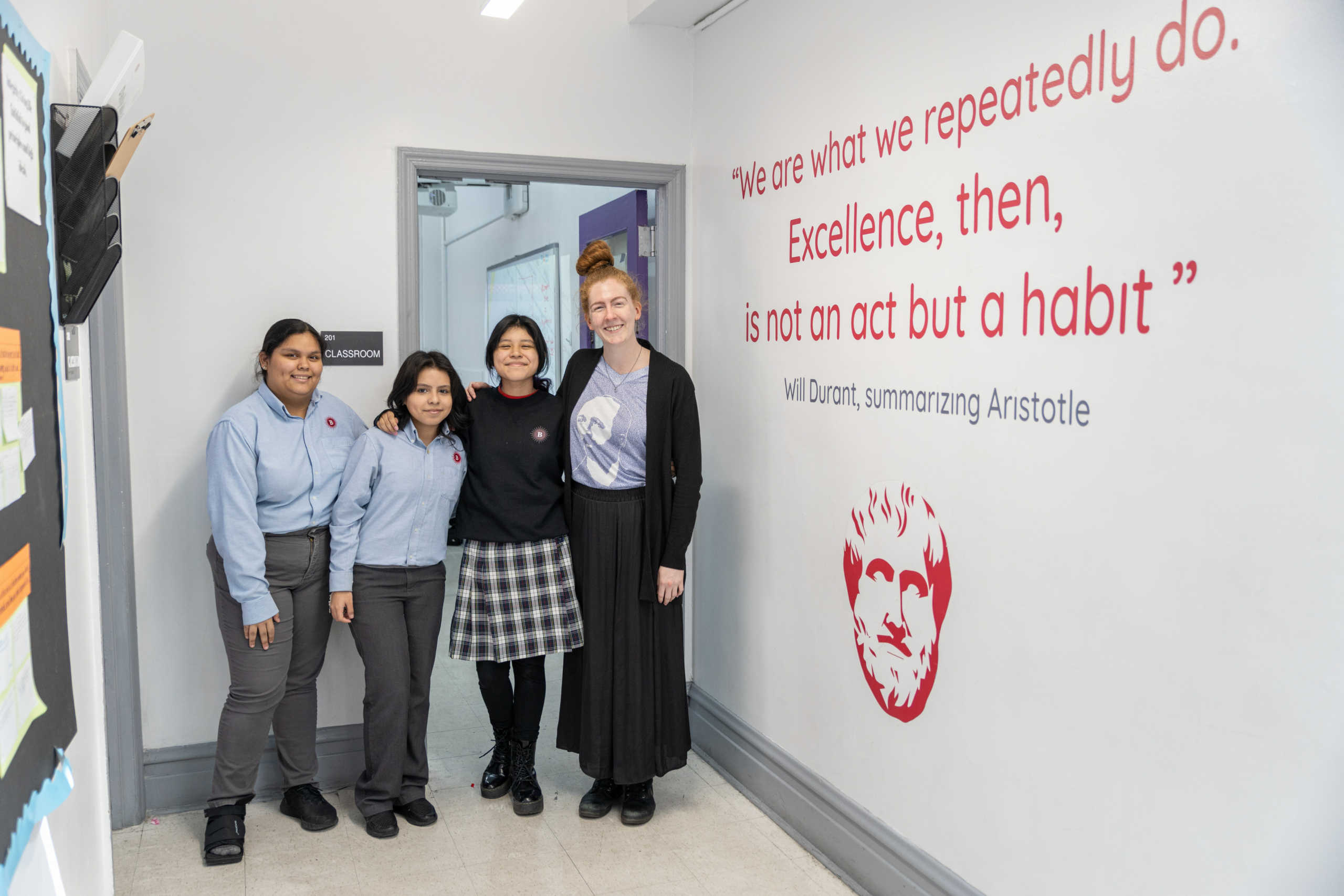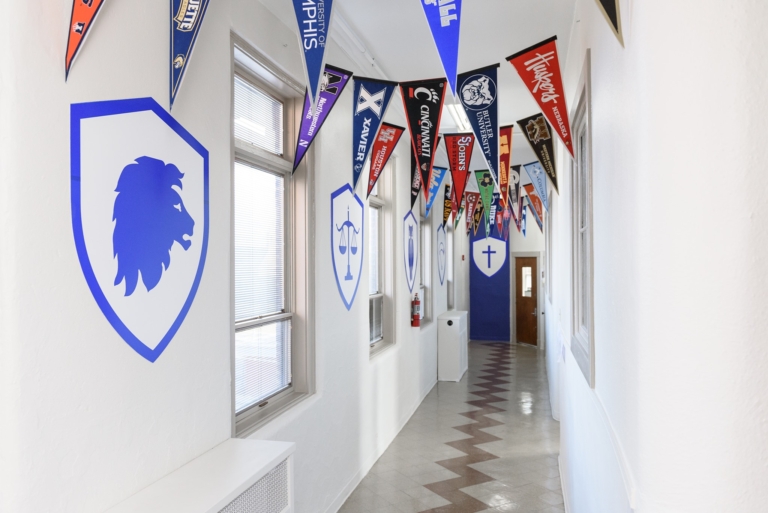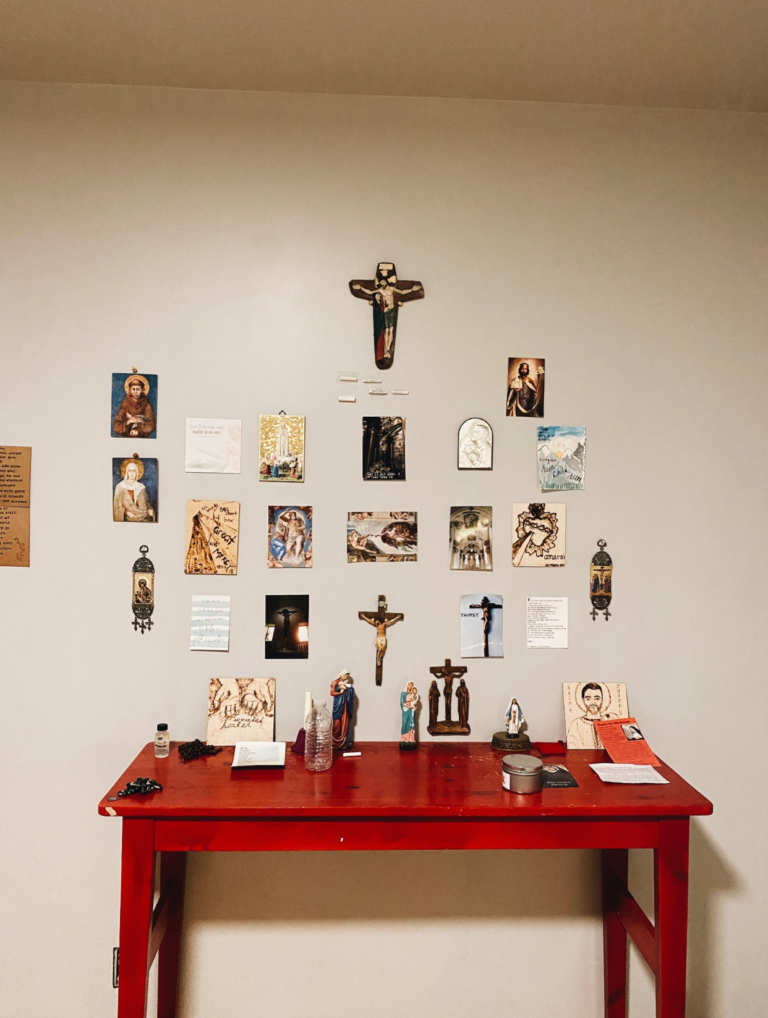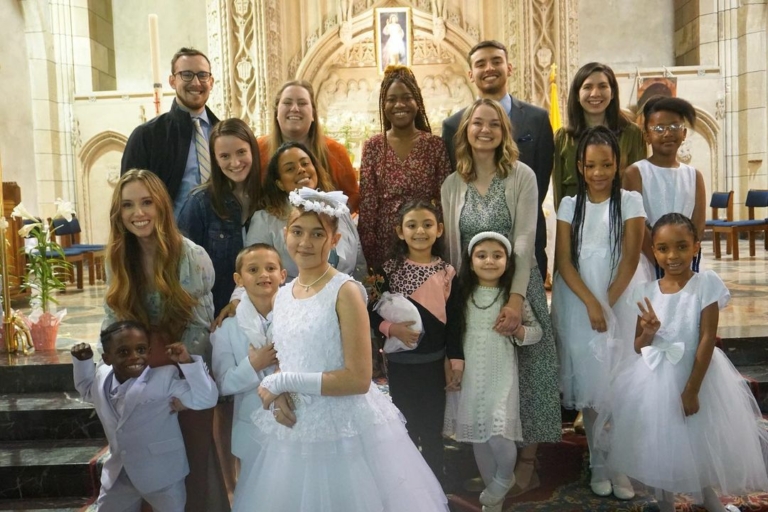By teaching 8th-graders how to give feedback, an entire Brilla class became better writers.
Since 2020, nearly every school in the United States has seen setbacks in student achievement due to the negative impact of the COVID-19 pandemic, which widened pre-existing disparities even further. As of August 2023, an estimated 17 million students have more than half a year of “pandemic-related learning delay.” The crisis disproportionately hit the populations we serve most. Test scores dropped for Hispanic and Black students compared to others. The gap between high-poverty and low-poverty schools’ test results grew by 15% for reading and 20% for math.
How, then, did scholars at Brilla College Prep defy the odds and achieve the seemingly impossible?
BCPM’s eighth-grade class demonstrated a passing rate of nearly 76% on New York City public schools’ English Language Arts (ELA) exam during the 2022-23 school year, up from a previous passing rate of 56%. That’s twenty points of growth in a single year!
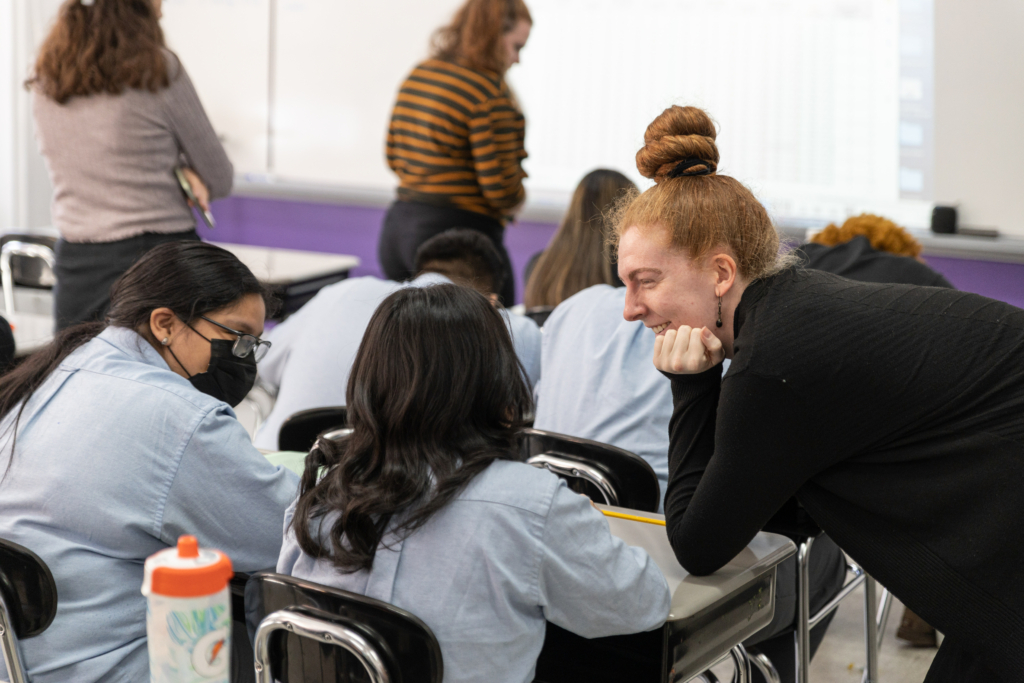
To put these amazing results into perspective, the city-wide passing rate for the eighth-grade ELA exam was 59.9%, and the passing rate for white students in New York City was 69.5%. BCPM students surpassed both rates by a significant margin.
Alison Denzer-King (known affectionately at Brilla as “Ms. DK”) was the English Language Arts teacher for the 2022-23 eighth-grade class. This is Ms. DK’s eighth year of teaching, and before her time at Brilla, she took the advice of a mentor and taught at several different kinds of schools early on to determine where she might thrive best. She began her career placed in the Bronx by Americorps, followed by a teaching position at a Catholic school on a Blackfeet reservation in Montana. After completing a master’s degree in English education at Harvard University, Ms. DK taught at a large public school in Cambridge, Massachusetts, where the students came from diverse socioeconomic backgrounds. “You’d have the kids of MIT professors in classes with kids whose parents were janitors at Harvard,” she explains. Yet Ms. DK knew she wanted to return to working with students in the Bronx, so she joined Brilla’s faculty during the pandemic.
Her students’ results on the 2022-23 ELA exam “is closing what is often referred to as the achievement gap, but is more aptly described as the opportunity gap.” She explains that there “are so many narratives about Bronx children underperforming. Our data and experience show that the city-wide low numbers at other schools are because of failures in supporting children and systemic marginalization, not a lack of talent or natural ability.”
Denzer-King’s eighth-grade class was made up of mostly students from economically marginalized or underserved backgrounds. How did these students come to demonstrate such incredible improvement so quickly? Ms. DK insists the students were the ones responsible: “We did not create these numbers for our scholars. We gave them the tools to use that they may or may not have had access to previously, but they put in the work to make it happen, and they brought the talent to the table. I firmly believe this is true of all of the students in the Bronx, and these kinds of results can be possible with the right environment, support, and time.”
While our scholars ultimately achieved their own results, the investment of time and individualized support made by Ms. DK and her former supervisor, Mr. James Sayer, was significant. One of the factors Ms. DK found most vital to her students’ growth was direct and specific feedback, especially on their writing. Ms. DK also began teaching her eighth-grade scholars the important skill of learning to give feedback on each other’s writing assignments. Eventually, she could walk around the classroom and hear them providing substantive comments referencing the assignment’s rubric. Her scholars learned to implement others’ suggestions with very little ego, a practice that helps facilitate a “growth mindset”—one that is especially important when it comes to student growth as a writer, given that the first draft is never the last draft.
“They were so receptive to feedback, which was unique to this student cohort,” says Ms. DK.
This openness and a growth mindset cultivated a classroom culture where students did not fear making mistakes, nor did they tease each other for not immediately getting something right. Ms. DK could ask her scholars to share examples from their own writing, and most were willing to do so—a level of vulnerability and humility that isn’t common in middle school when fear of peer judgment is an ever-present reality for many students. Such a collaborative revision process is an important part of learning to write well and a skill that doesn’t often develop if students have a “fixed” belief that they’re either a “good writer” or not. In other words, creating a classroom culture where students feel safe and supported as they learn to receive and implement feedback isn’t merely a bonus—it is vital to flourishing.
A healthy classroom culture was undoubtedly one of the main elements that led to such stellar student results on the ELA exam. Ms. DK emphasizes that her scholar’s exemplary scores weren’t due to a devotion to “test prep season” and were not “something that just happened at any one point…It was how we operated every day in class from the beginning of the year, focusing on building skills that matter. Some of that is the stuff they test on, and some of it isn’t.”
Building student trust also played a major role. Public schools in the Bronx have some of the highest teacher turnover rates in the nation, but this is Ms. DK’s fourth year teaching at BCP, and her visible investment in her classes’ growth clearly matters to her scholars. “It can be a huge disincentive if they know teachers will leave,” she acknowledges. For example, when one of her students—who’d had some struggles meeting school expectations in the past—was asked by his cousin why he didn’t give Ms. DK any trouble, Osman responded,“She’s been around. I’ve known her since sixth grade.”
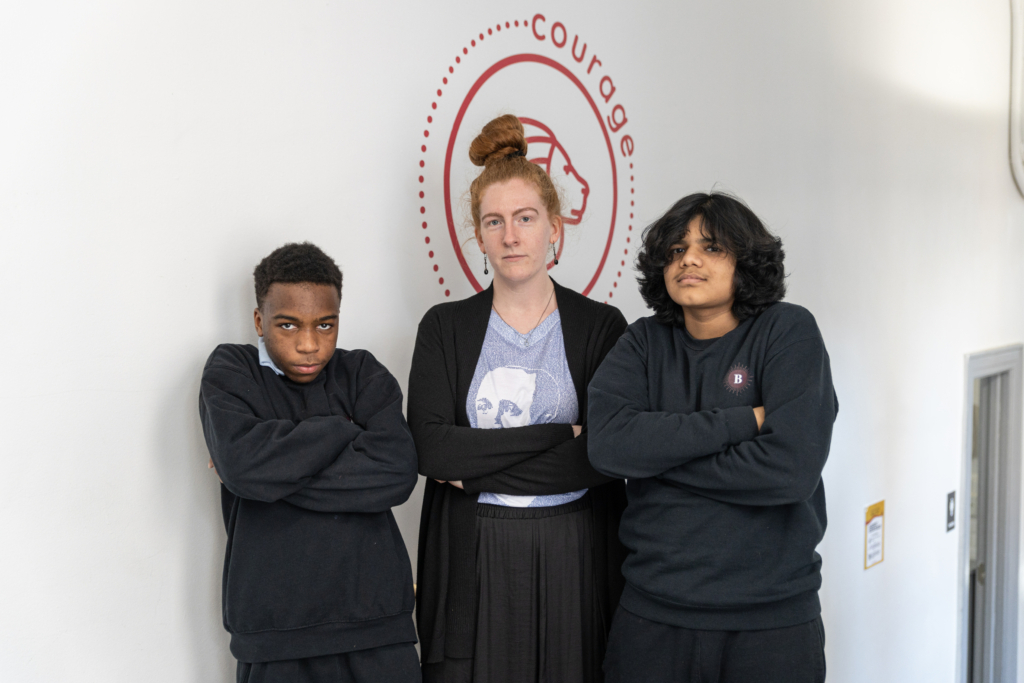
Ms. DK had come to truly know Osman, and she recognized that he was a young man who cared about justice and the unfairness in the world. As a result of this personal relationship, she was able to give him texts related to these themes, which helped Osman become more invested and engaged in what he was reading.
“Students learn better from people they know who care about them,” says Mr. William Scott, principal at BCPM. “She [Ms. DK] is an exemplary teacher in caring for students…it’s clear when you enter the classroom that she knows each student individually. This plays into the feedback thing. She knows what the student needs emotionally and intellectually and can pair that with how she gives the feedback so they hear it.”
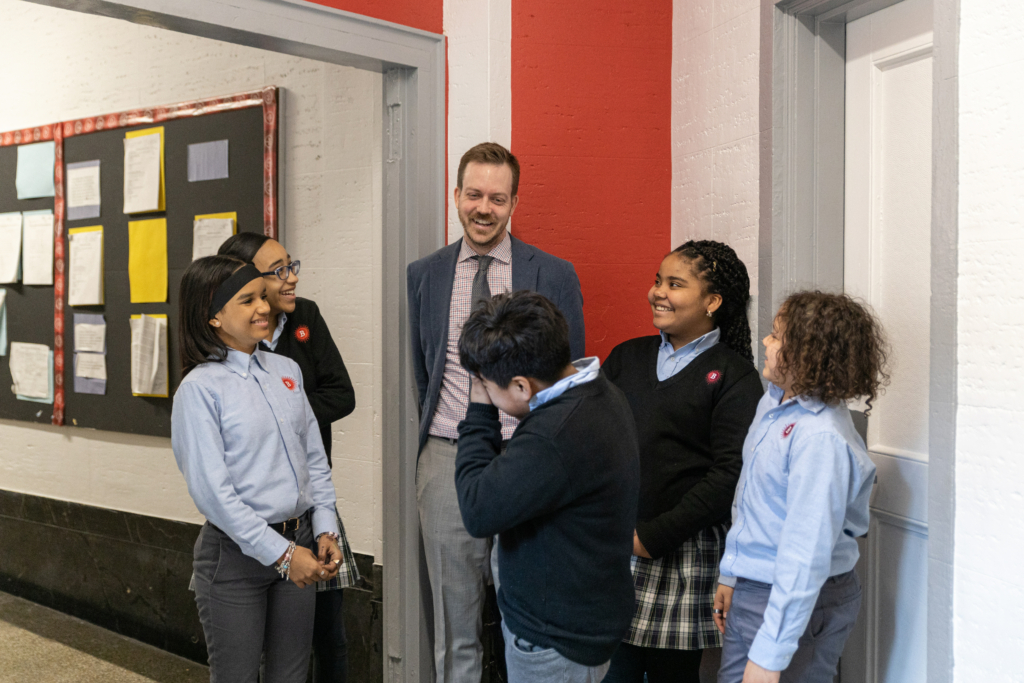
Ms. DK notes that with Mr. Scott as principal at BCPM, she feels free to implement her own ideas. “I am a person who wants people to do things in the way that is best for them,” Mr. Scott explains. “Yes, we have guardrails, a curriculum, and I expect certain metrics…but Ms. DK and I are different teachers. We could both be very good teachers, but if we’re not living into what suits us best within those guardrails, it will be canned and not a good classroom.”
To create a classroom conducive to students achieving such impressive results, Ms. DK acknowledges that it took a team of people who established an environment of support and trust that enabled her scholars to thrive. At the beginning of the school year, several of Ms. DK’s students were reading and writing below grade level, and at least three eighth-graders were reading and writing below a third-grade level. “Thanks to Stacy Peralta, our 8th-grade Special Education teacher, we had the lowest percentage of students in the school with a one on the state exam [the lowest score, which indicates the need for a lot of remedial support]. “That is directly because of her work with them,” says Ms. DK. “She creates extremely structured lesson plans—she was instrumental.”
Cross-curricular collaboration also played a role. Lashawn Taylor, the eighth-grade team lead and humanities teacher, had students read in class daily and write summaries of what they read. Students were also working on critical thinking skills and grammar. Samantha Gross, Ms. DK’s Integrated Co-Teacher who specializes in supporting students with IEPs, was instrumental in coaching scholars who needed specialized support. Maddie Sanders, Ms. DK’s Seton Teaching Fellow, did a lot of one-on-one coaching in class, coming alongside scholars who were doing “well enough,” but just barely—the ones who often slip through the cracks.
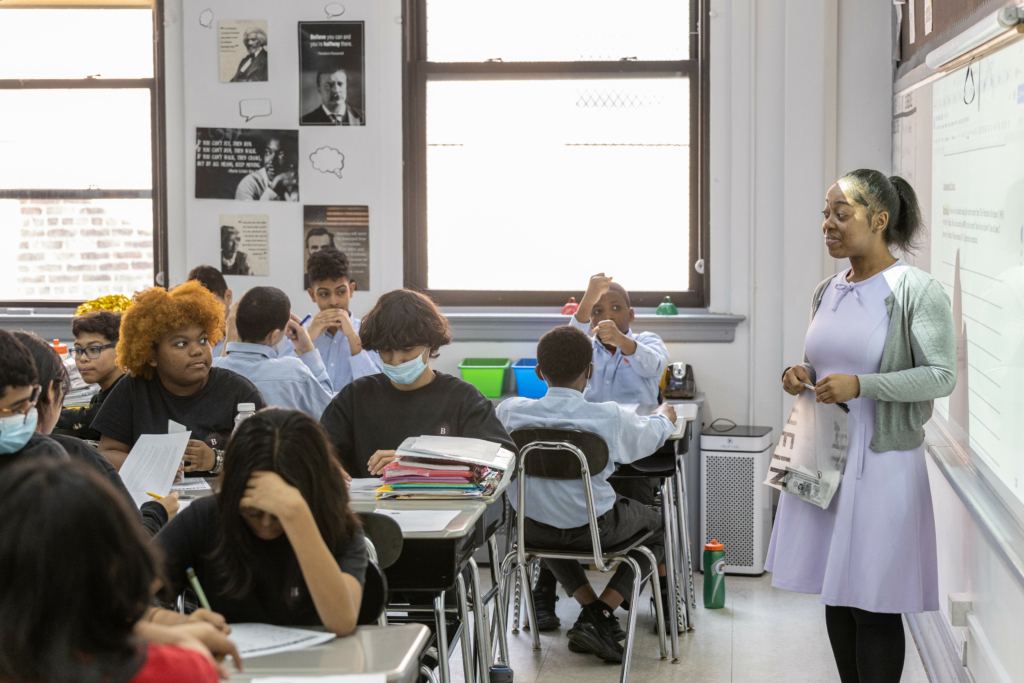
Abdullah and Keilani were two students who could have been on the cusp of “slipping through the cracks.” Yet Ms. DK recognized that both students had competitive spirits and discovered that group work helped them to activate this inner drive. Their motivation benefited both scholars when it came time to choose a high school, and now they are freshmen at New York City high schools with unique offerings. Abdullah attends Vertex Partnership Academies, a character-based, International Baccalaureate (IB) public charter high school developed in partnership with Brilla. Keilani is enjoying the school community at Saint Raymond Academy for Girls, where she was awarded a scholarship through the Student Sponsor Program for all four years of high school.
Yafreisy was another scholar who faced significant challenges at the beginning of the school year, having recently emigrated from the Dominican Republic. When she first began at Brilla, she barely spoke English and initially scored a one on the ELA exam. Yet Yafreisy worked harder than anyone, and by the end of the year, she was on the cusp between a score of two and three (which is passing). “She did everything on the rubric; she annotated every paragraph,” says Ms. DK. Her results were “99% her effort. We gave her tools, and she applied them.”
By the end of the year, Yafreisy memorized and recited an entire Shakespearean sonnet from memory better than many native English-speaking students. Yafreisy now attends International High School at Union Square, a community of Multilingual Language Learners from over fifty countries.
Noticing a student’s individual needs and responding personally are hallmark traits of an effective teacher and ones that surely contributed to Abdullah’s, Keilani’s, and Yafreisy’s growth.
“Ms. DK is really good at understanding people and talking to students,” says Keyla, a scholar who was also part of the 2022-23 eighth-grade class. Keyla describes how Ms. DK was always willing to discuss her feedback on essays with students one-on-one. “The critique always felt personal and helped us work on what we could do better.”
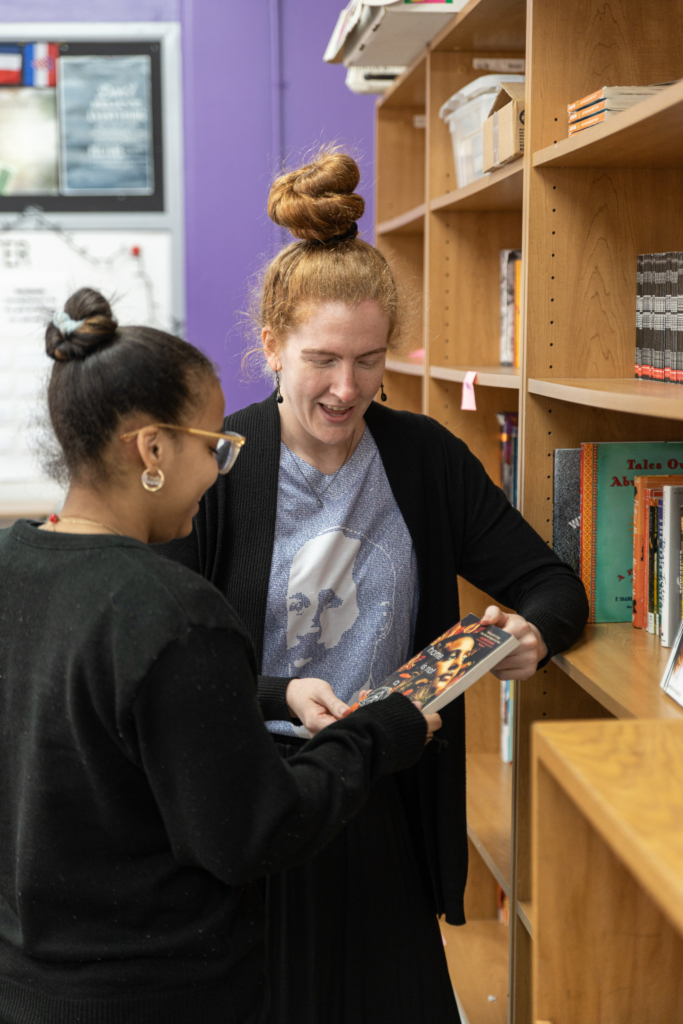
Lisette Carrion, Keyla’s mother and a current Brilla parent, also appreciated the open dialogue with her daughter’s teacher. “I remember Ms. DK really well. She was really supportive and good at communicating with parents.”
Keyla notes that the group work and peer critiques she completed with her classmates prepared her well for high school, where she is succeeding as a freshman. “You had to talk to people and work together to complete the assignment.”
Strengthening communication skills isn’t the only benefit these scholars received in preparation for high school. Mr. Scott and Ms. DK explain that the results of the ELA exam are not only indicators of future success on the SAT or ACT and demonstrate that students are “on grade level,” they also provide scholars with a deep sense of pride that impacts their overall performance.
We celebrate that our scholars have so much to be proud of, as do the dedicated staff and teachers at Brilla who create caring and collaborative learning environments that empower our students to embrace their inherent, God-given potential.
